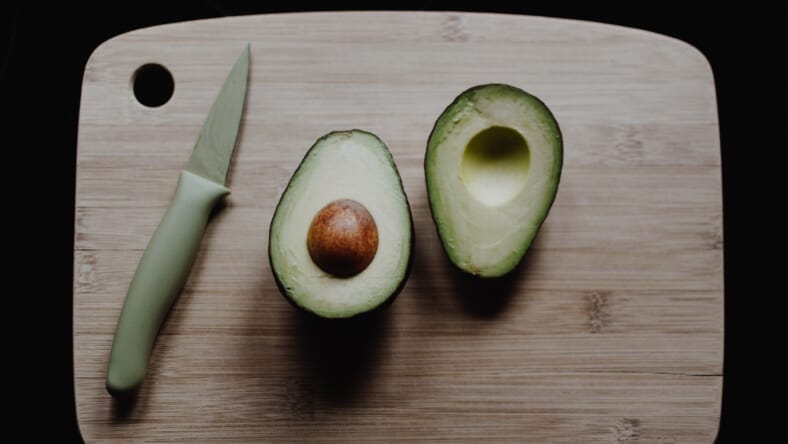
Cutting boards are an essential tool in the kitchen, and they come in different types of materials, such as wood, plastic, or bamboo. Regardless of the material, it’s important to maintain your cutting board’s cleanliness to prevent cross-contamination of foodborne illnesses. In this article, we will guide you through how to clean your cutting board properly and ensure it is safe for your next use.
Types of cutting boards

Cutting boards come in different types of materials, and each one has its advantages and disadvantages. Here are some of the most popular types:
Wood: This type of cutting board is preferred by many home cooks for its durability and natural look. It’s also gentle on knives, which means it won’t dull the blade as quickly as other materials. However, wood can harbor bacteria if not cleaned properly.
Plastic: Plastic cutting boards are easy to clean, lightweight, and affordable. They also come in different colors to prevent cross-contamination when cutting different types of foods. However, plastic boards tend to develop deep grooves that can harbor bacteria and make them difficult to clean.
Bamboo: Bamboo cutting boards are a popular alternative to wood. They are eco-friendly and affordable. However, they can be difficult to clean due to their porous nature, which can cause them to absorb moisture and bacteria.
Check Out: How to Clean a Burnt Pan Without Damage
Why is it important to clean your cutting board?
Cross-contamination can occur when raw meat, poultry, or seafood come in contact with fruits, vegetables, or cooked food. It’s best to use separate cutting boards when preparing raw meat or fish alongside vegetables or starches. However, even when you think you’ve rinsed off your cutting board enough, you could still have a dirty cutting board that is harboring harmful bacteria and can cause food poisoning. To prevent this from happening, it’s crucial to clean your cutting board after each use thoroughly.
How to clean your cutting board step-by-step

Step 1: Preparing the Board
Start by removing any food debris on the cutting board using a spatula or scraper. Use a paper towel or a clean cloth to wipe off any remaining residue.
Step 2: Cleaning the Board
- Wood: Clean wood cutting boards with hot, soapy water, and a scrub brush. Rinse the board with hot water and dry it immediately with a clean towel.
- Plastic: Plastic cutting boards can be cleaned in the dishwasher or with hot, soapy water. Rinse the board with hot water and dry it immediately with a clean towel.
- Bamboo: To clean a bamboo cutting board, use hot, soapy water and a scrub brush. Rinse the board with hot water and dry it immediately with a clean towel.
Step 3: Disinfecting the Board
- Wood: To disinfect a wood cutting board, use a solution of one-part white vinegar to four parts water. Pour the solution onto the board, and let it sit for a few minutes. Rinse the board with hot water and dry it immediately with a clean towel.
- Plastic: Plastic cutting boards can be disinfected with a solution of one tablespoon of unscented bleach mixed with one gallon of water. Pour the solution onto the board and let it sit for a few minutes. Rinse the board with hot water and dry it immediately with a clean towel.
- Bamboo: To disinfect a bamboo cutting board, use a solution of one-part white vinegar to four parts water. Pour the solution onto the board and let it sit for a few minutes. Rinse the board with hot water and dry it immediately with a clean towel.
Other tips for maintaining your cutting board:
- Use separate cutting boards for different types of food, such as raw meat, poultry, seafood, fruits, and vegetables.
- Replace your cutting board if it’s too worn out, has deep grooves, or is cracked.
- Store your cutting board in a dry place to prevent moisture and bacteria growth.
- Use a food-grade mineral oil to condition your wood or bamboo cutting board regularly.
FAQs
How often should I clean my cutting board?
Can I use a dishwasher to clean my cutting board?
How do I remove tough stains from my cutting board?
Is it safe to use bleach on my cutting board?
How do I store my cutting board properly?
Can I use olive oil to condition my cutting board?
What should I do if my cutting board smells bad?
Conclusion
Maintaining a clean cutting board is crucial for preventing foodborne illnesses. Not to mention, it will make your cooking and clean up experience more enjoyable as long as you keep up with it after each use. Now that you know how to clean your cutting board properly and disinfect any remaining bacterias, you can get back in the kitchen. Remember to use the appropriate cleaning methods according to the type of cutting board you have, so it remains in good shape as long as possible.
Explore More About:Home & Garden